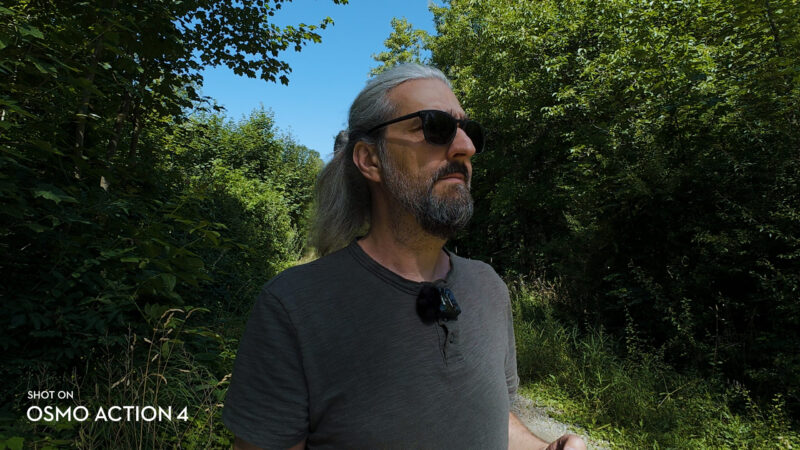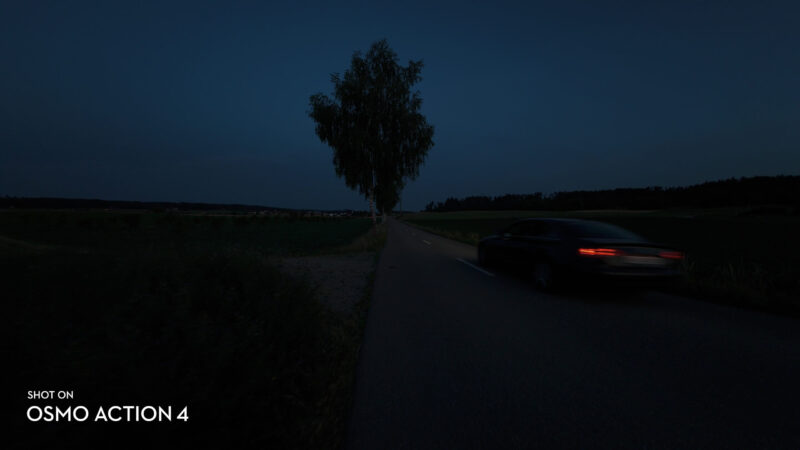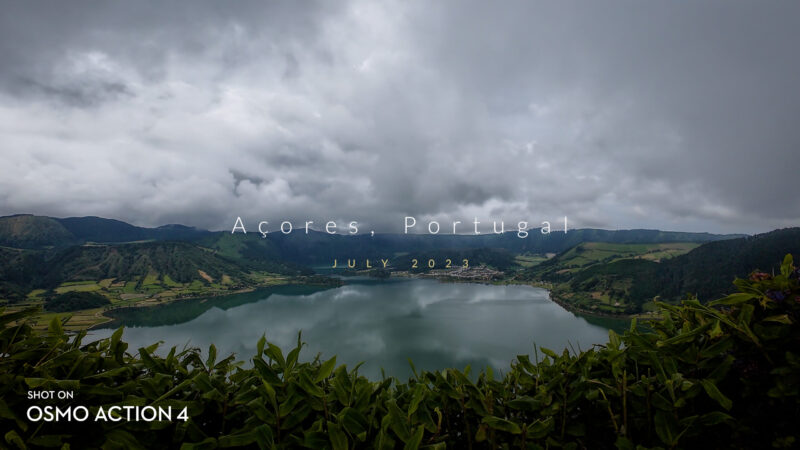DJI Osmo Action 4 Review
DJI sent me to try out their new Osmo Action 4. Let’s see if the improvements make it worth upgrading.
Going by appearances, there’s nothing dramatically different from the DJI Osmo Action 3. In fact, I think it looks pretty identical to the previous version. They’ve sent me the Adventure Combo package, which includes a few extras. Again, pretty much the same as the Action 3 Adventure Combo.
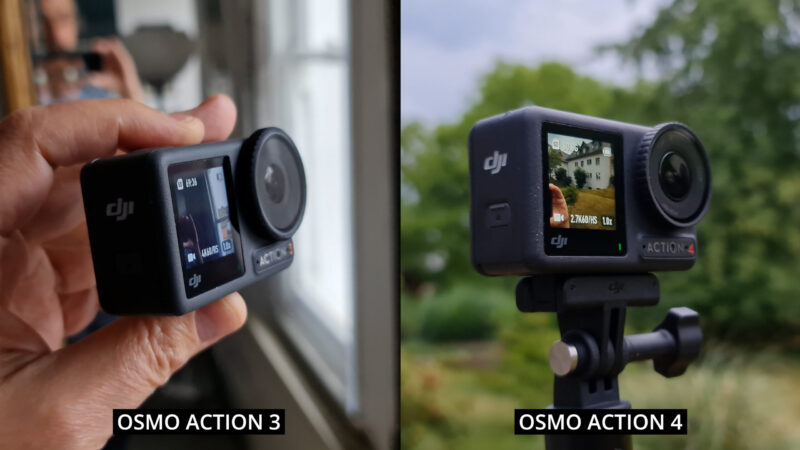
The Osmo Action 4 has all the convenience and ease-of-use of the previous version. In fact, they seem to have simplified the user experience even further. If you’ve used a GoPro, you’ll know the system for changing settings isn’t the most user friendly.
The Action 4 has the same quick release, magnetic mounting system, which is very easy to use. Again, much quicker than the GoPro. Place it in the cage and now you can fix the Action 4 using the side mount. The magnet in the camera also allows you to stick the camera to metal things.
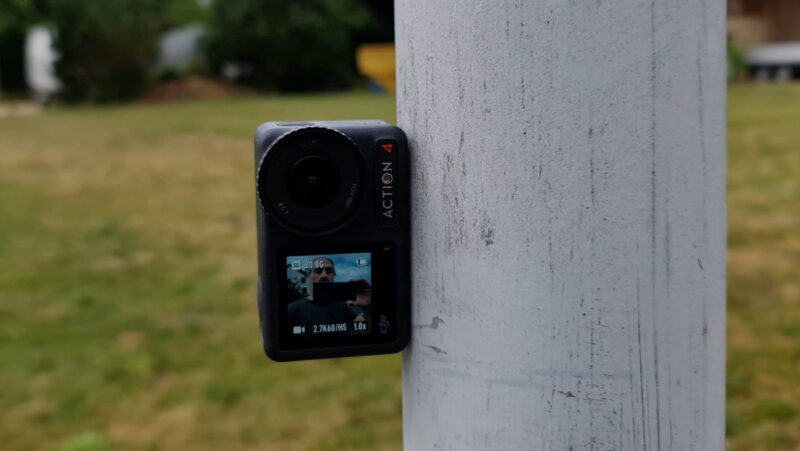
In this pack there’s a battery charger containing 3 batteries. So it’s really easy to charge all your batteries at once and then you’ll have plenty of battery power to keep you filming for many hours.
In the lab, DJI achieved 160 minutes of recording time, so 2 hours and 40 minutes. This was at 25° C, recording 16:9 1080p/24fps, with RockSteady on, Wi-Fi off and the screen off. Shooting more demanding video will drain the battery faster. Like you won’t be able to shoot 10-bit colour at 4K and 120fps for 160 minutes on one battery.
DJI Osmo Action 3 vs DJI Osmo Action 4?
The Action 4 has a larger sensor compared to the Action 3. The 4 has a 1/1.3 inch with a pixel size of 2.4 μm. Osmo Action 3 uses a 1/1.7-inch sensor with a single pixel size of 1.6 μm.
DJI are so confident about the performance of the new sensor they’ve removed the HDR mode. Videos recorded by Osmo Action 4 have a high dynamic range which, in theory, means there’s no need for the HDR mode.
While the bigger sensor has less pixels (10 MP instead of 12 MP) this doesn’t change the available resolution. The Action 4 can still shoot at 4K using the 4:3 frame ratio at up to 60fps and up to 120fps using the 16:9 ratio.
Minimum Focus now 0.4 meters
With an F2.8 aperture, there’s no focus control.
Everything will be in focus from about half a meter from the camera. As with other action cameras, don’t try any extreme close ups. The minimum focus distance for the Osmo Action 4 is 0.4 meters, whereas the Osmo Action 3 had a 0.3 meter minimum focus.
10-Bit Color
The Osmo Action 3 had 10-bit colour and a LOG setting called D-Cinelike. The Action 4 supports 10-bit colour, as well, but this time in combination with their D-LOG M colour profile. Tap settings and then enable D-LOG M colour.
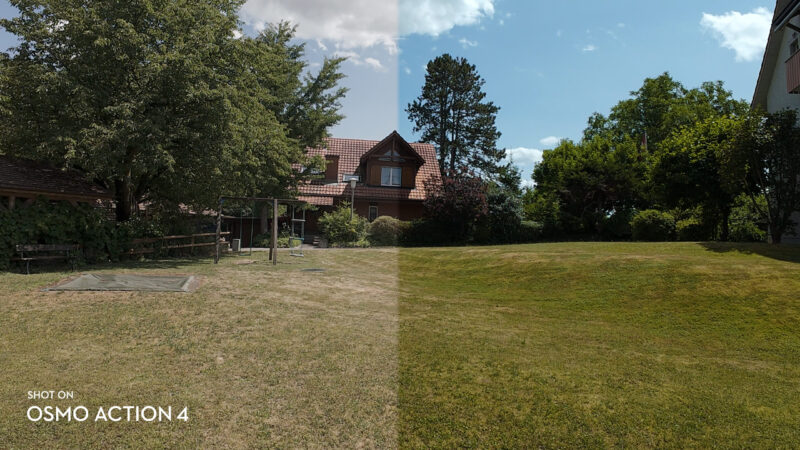
If you’ve used a DJI drone, you’re probably aware of the D-LOG M profile. A 10-bit LOG profile is going to be good for colour grading when you’re editing. But bear in mind the HEVC or h.264 codecs used in these devices use Chroma 4:2:0 subsampling, which actually discards 75% of the colour information.
If you select the HEVC codec, you get 10-bit colour whether or not you’ve enabled the D-LOG M profile. So if you want 10-bit colour in the regular colour profile, just switch to the HEVC codec and switch off D-LOG.
Better Dynamic Range
I do think you can see a definite improvement in the dynamic range. See how shadows still retain details while the sky is nicely exposed too. Even in the regular profile, it’s not blowing out at all. To my eyes, the DJI Osmo Action 4 produces well balanced images.

When I tried some low-light shots, I didn’t like the way the camera pushed up the ISO and created lots of noise. It also over-brightened the image, making it look like daytime when it was sunrise. Once I switched to manual exposure it looked much better.
Field of View
Same as with the Action 3, when you switch to Ultrawide, the Action 4 has a 155° FOV which is slightly wider than the GoPro 11’s maximum FOV of 151°.
Horizon Levelling
Like with the Osmo Action 3, the Osmo Action 4 has 2 horizon stabilising modes, HorizonBalancing and HorizonSteady.
HorizonBalancing will keep the horizon level at an angle of up to 45°. HorizonSteady keeps the horizon level for the full 360° roll – well, you can just keep rolling as much as you want. However, to get HorizonSteady you will need to use 2.7K resolution or less.
This is good for action sports or underwater filming, if you’re performing a roll while wearing the camera but want the horizon to remain level. But it’s also great for filming crane style shots using the extendable handle you get with the Adventure Combo.
I shot a travel video using the DJI Osmo Action 4 which you can view as a member on Patreon as well as listen to my 30 minute director’s shot-by-shot commentary.
Better Underwater Performance
DJI have added a couple of meters to the maximum depth the Osmo Action can go underwater. The Osmo Action 3 has a max depth of 16 meters, the Osmo Action 4 has a max depth of 18 meters. Meanwhile, the GoPro Hero 11 can only go down to 10 meters.
Like the previous version, the Osmo Action 4 has dual touchscreens. This means you can adjust settings using both screens, although the front screen is smaller and therefore a bit more tricky to use this way. But in certain situations, you might find this is the easiest screen to reach.
The GoPro Hero 11 has 2 screens, but only the back screen is a touchscreen.
Other new features
There’s some other features new to the Osmo Action 4.
There’s a Vivid Underwater which restores true-to-life colours underwater with more vivid details.
Gyro data can be output for stabilisation in post-editing software like Gyroflow. This means you can switch off stabilisation in the Action 4 and use the Gyro data to stabilise the video later. One reason to do this is that in low light, or when you use an ND filter to slow shutter speed, the digital stabilisation in the camera doesn’t work as well.
Users can set sharpness and noise reduction in the camera. Each setting has 5 levels, from -2 to +2.
Conclusion
Overall, I had a lot of fun filming with the DJI Osmo Action 4 while I was holidaying in the Azores, Portugal. The Adventure Combo is very easy to carry around and quickly capture precious moments as the opportunities arose. The image quality is an improvement, with the larger pixels giving a more pro camera look than the old Osmo Action 3. The difference isn’t huge but probably enough to make it worth the extra cost.
Simon Horrocks
Simon Horrocks is a screenwriter & filmmaker. His debut feature THIRD CONTACT was shot on a consumer camcorder and premiered at the BFI IMAX in 2013. His shot-on-smartphones sci-fi series SILENT EYE featured on Amazon Prime. He now runs a popular Patreon page which offers online courses for beginners, customised tips and more: www.patreon.com/SilentEye


